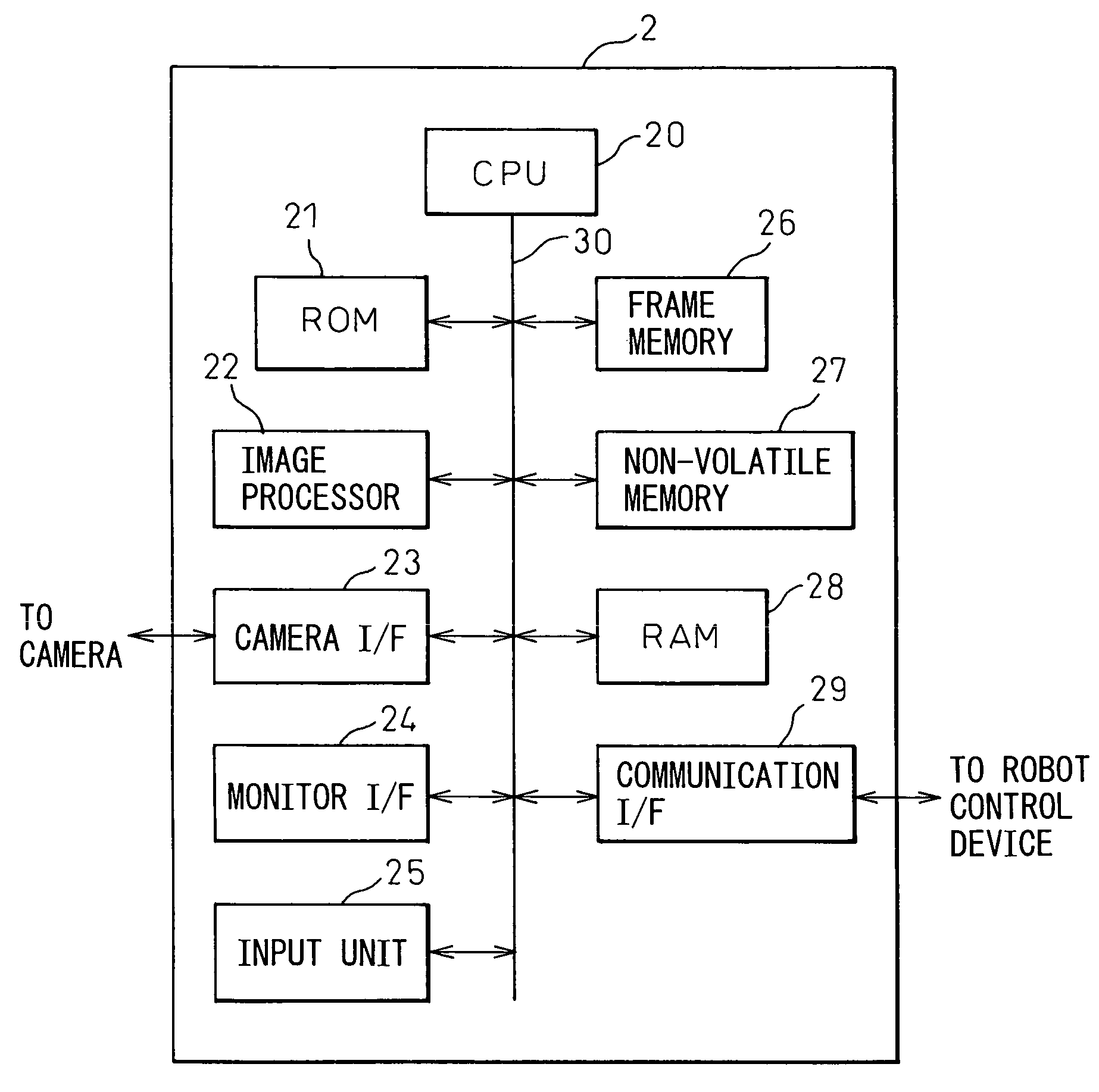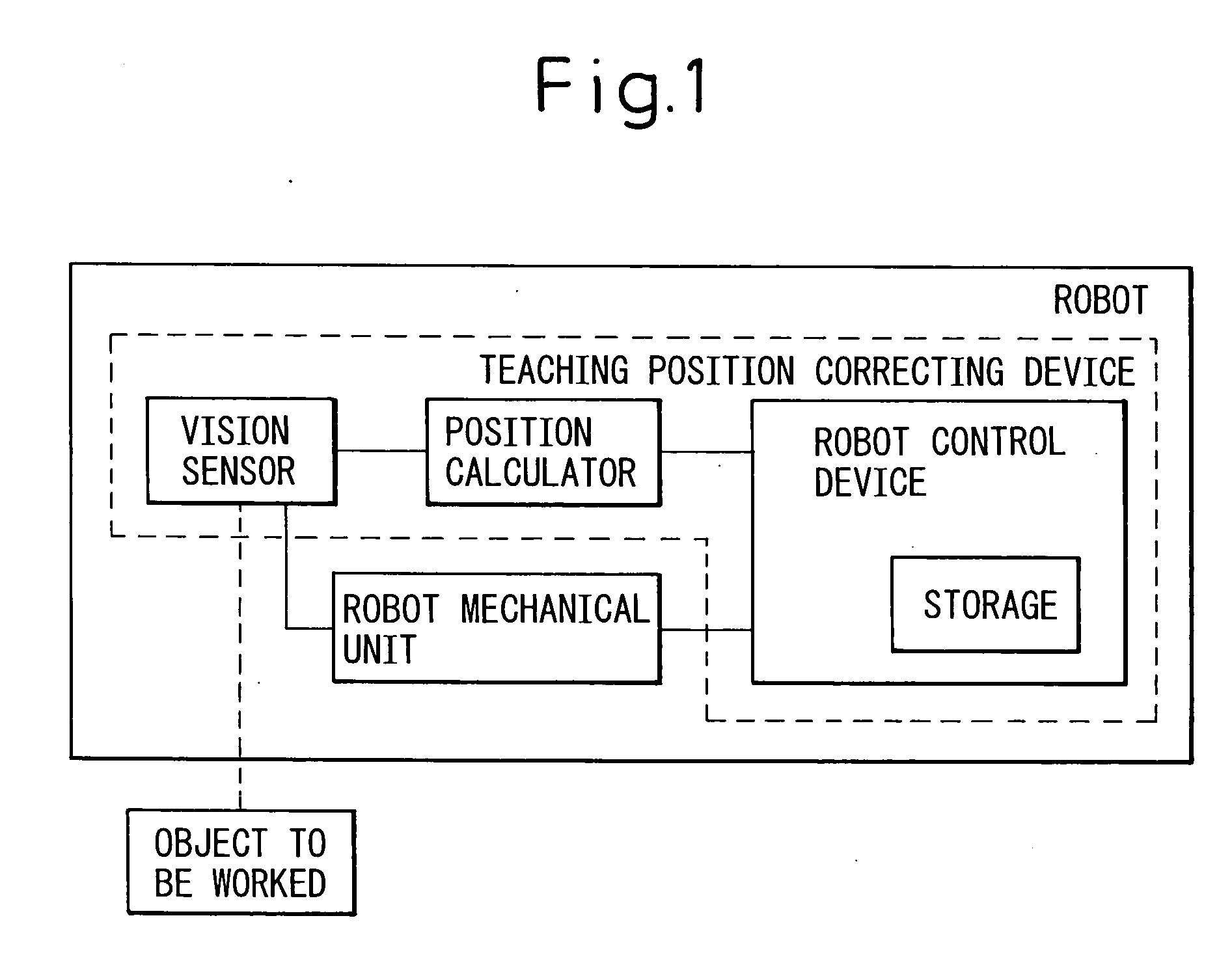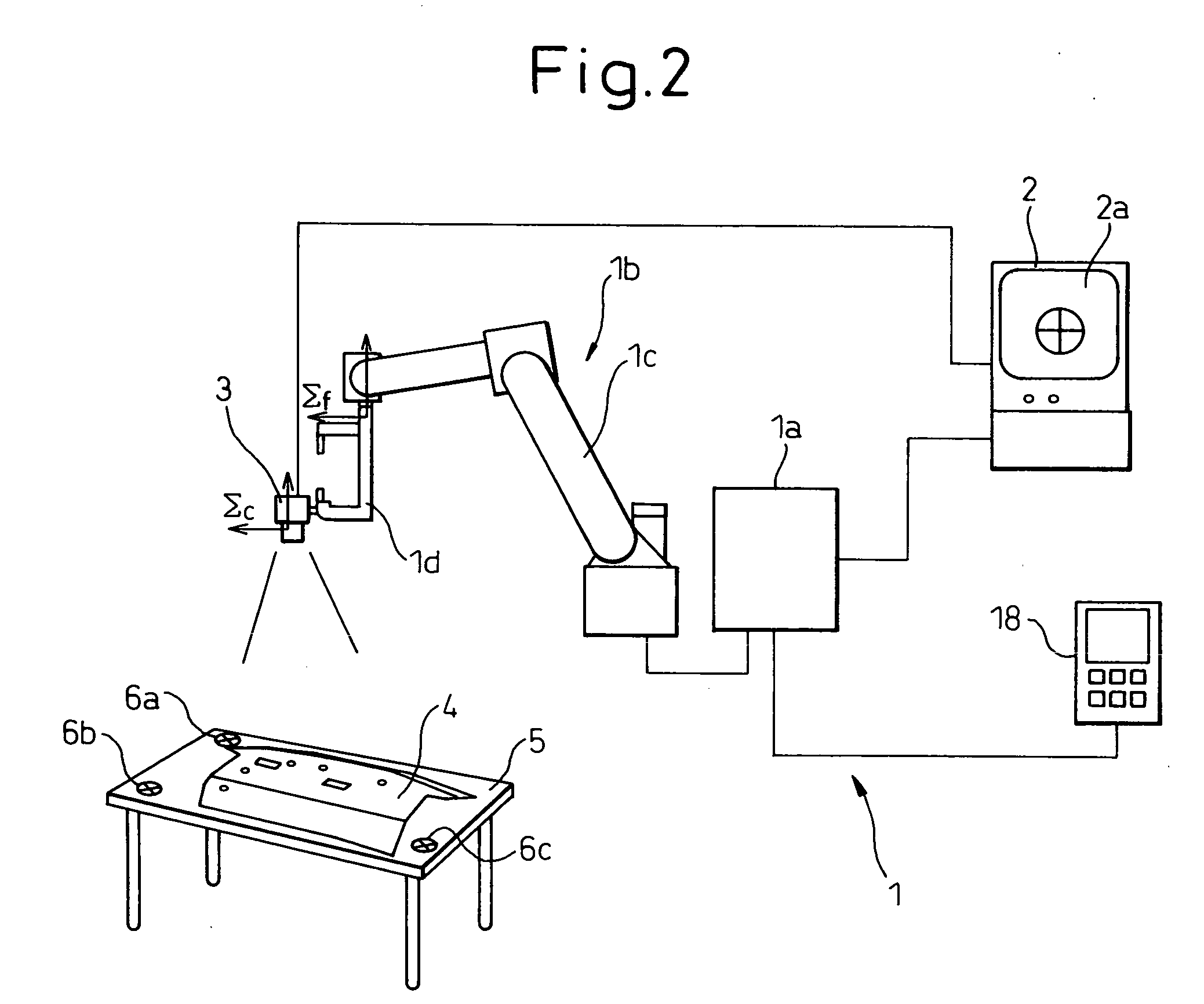Teaching position correcting device
a technology for teaching positions and robots, applied in the direction of electric programme control, program control, instruments, etc., can solve the problems of difficult teaching correction work, position correction, and inability to use the motion program of the robot taught before the line is moved, so as to improve teaching accuracy and teaching accuracy. , the effect of reducing load
- Summary
- Abstract
- Description
- Claims
- Application Information
AI Technical Summary
Benefits of technology
Problems solved by technology
Method used
Image
Examples
Embodiment Construction
[0041] A teaching position correcting device according to embodiments of the present invention is explained below with reference to the drawings. As shown in FIG. 1, the teaching position correcting device according to the present invention is designed to correct a teaching position of a motion program for a robot when at least one of the robot having a robot mechanical unit and an object to be worked by the robot is moved. The teaching position correcting device has: a storage that stores the teaching position of the motion program; a vision sensor that is configured to measure a three-dimensional position of each of at least three sites not aligned in a straight line on the object to be worked by the robot; a position calculator that obtains a three-dimensional position of each of the at least three sites before and after a change respectively of a position of the robot mechanical unit relative to the object to be worked, based on measured data obtained by the vision sensor; and a...
PUM
 Login to View More
Login to View More Abstract
Description
Claims
Application Information
 Login to View More
Login to View More - R&D
- Intellectual Property
- Life Sciences
- Materials
- Tech Scout
- Unparalleled Data Quality
- Higher Quality Content
- 60% Fewer Hallucinations
Browse by: Latest US Patents, China's latest patents, Technical Efficacy Thesaurus, Application Domain, Technology Topic, Popular Technical Reports.
© 2025 PatSnap. All rights reserved.Legal|Privacy policy|Modern Slavery Act Transparency Statement|Sitemap|About US| Contact US: help@patsnap.com



